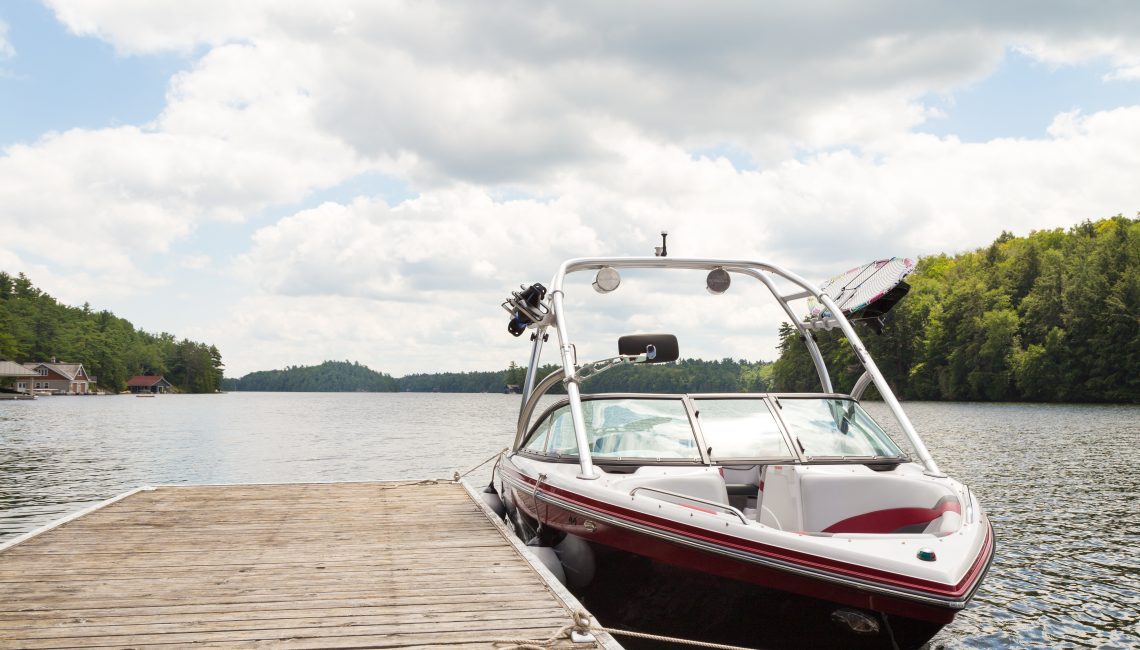Everything You Need to Know to Get Ready for the Boating Season
It’s that time of year again to uncover your boat and get it prepped to head for the water. Are you all set for boating season? Have you done the necessary maintenance to get your boat ready?
You might think that when spring arrives, all you need to do is remove the cover, start the engine, and head out onto the open water. After all, you did all the necessary maintenance when putting your boat away for the winter. But even though the work you did in the fall makes things easier in the spring, there are still a few things to check before you go out on the water.
Don’t worry. We’ve made a checklist to help you de-winterize your boat for a safe and enjoyable time this upcoming boating season. We’ll go over everything from checking your boat’s engine to inspecting your safety equipment to having the right boat insurance so that you can safely get back out on the water.
1. Clean and inspect your boat
Start by carefully removing your boat’s cover. If it’s made of canvas, check for tears or signs of leaks to see if it needs fixing or replacing before next winter. Then, look over the cover and inside the boat for any signs of insects, birds, mice, or other pests. These could be scratches on the floor, chewed wires, droppings, or even nests under the tarp.
Next, clean the boat well to remove dust, dirt, and grime. This is also a good time to fix any surface damage like scratches, replace old wiper blades, patch cracks or tears in seat cushions, polish exposed wood or metal, or add a new coat of paint. Also, don’t forget to protect the underside of your boat with an antifouling coating.
2. Check the engine
Even though you should inspect your engine at the end of the season, it’s also a good idea to do a quick check at the beginning because your boat’s engine hasn’t been used for months.
- Look over the boat’s engine and its parts for any signs of dents or other damages that may require repairs or replacement.
- Make sure to fill up all the fluids, like the engine oil, transmission, trim tab oil, and any hydraulic fluids your boat may have.
- Replace the oil filter.
- Inspect all the cables for signs of wear and tear.
3. Inspect the cooling system
Before you fill-up the cooling system, make sure all the hoses are free from cracks and leaks. Also, clean out your boat’s raw water or sea strainer—just remember to turn off the water first! If you didn’t clean and drain your cooling system last fall, do it now. Then, you can refill the system.
Don’t forget to check the impellers if your boat has an outboard motor. If there are any cracks, you need to replace them. Even if there aren’t any cracks but the impellers have been used for over 200 hours, it’s time to replace the water pump and thermostat for the new season.
4. Inspect the fuel system
If your fuel system is damaged, it can cause big problems for your boat’s engine. Check for any cracks, leaks, or weakening in your boat’s fuel tank, pump, filter, fuel lines, and vent hoses. Look over the fittings and connections for any wear or damage. Make sure everything is tight and secure. If any connections are loose, tighten them right away.
When you stored your boat over the winter, you should have added a fuel stabilizer to the gas tank to prevent the fuel from separating. If you missed this step, you’ll need to empty the tank and any portable gas containers before refilling them. If you didn’t change the fuel filter when you prepped for storage, check it now and clean or replace it if needed.
5. Inspect the bilge pump and switch
Check the pump, the automatic float switch, and the electrical circuit for any signs of rust, breaks in the cables and wiring, or a burnt smell that might suggest a short inside. Make sure there’s no debris blocking the float switch and nothing stopping the impeller from moving.
The best way to test if your pump and switch are working is to add water to your bilge. If it doesn’t work, look at the electrical connections at the pump and switch, as these are often where problems occur. Also, check if low battery voltage, the manual switch at the helm, or any kinks, disconnections, or blockages in the outlet hoses might be causing issues with your automatic bilge pump.
6. Inspect the electrical system
Check the electrical system, including the wires, lights, and battery cables/connections. Replace any wires that are frayed or damaged. Clean the connections on the battery and ensure all the lights are working properly. Also, make sure the battery poles are tightened properly and that the batteries have the right voltage.
6. Inspect and replace the anodes
It’s important to change your zinc anodes every year to protect your boat from electrolysis and rust. For anodes to work right, they must have a good electrical connection. If the anodes on your boat are more than half worn out, they need to be replaced. Spending a little each year on new anodes can prevent significant damage to your boat. Before putting on new anodes, use fine sandpaper to clean the area where they attach, and make sure not to paint over them.
7. Inspect the navigation equipment
Ensure your boat has all the essential navigation tools like a compass, GPS, and depth sounder. If your boat has a multifunction display (MFD), turn it on to check if it works correctly. Test all the equipment to make sure everything is functioning well and is up-to-date at the start of the season.
8. Inspect your safety equipment
Take a look at all of your safety gear on board:
- Make sure you have enough life jackets, they’re in good shape and fit well.
- Check the fire extinguishers to ensure they are fully charged.
- Check all the flares to make sure they haven’t expired.
- If you have a carbon monoxide detector, check that it’s working and change the batteries.
- Inspect your first aid kit and emergency kit and make sure they’re both fully stocked.
9. Inspect sailboat rigging
If you own a sailboat, you need to inspect the rigging. Look for signs of wear, corrosion, or damage such as cracked swages, rust, or bent parts. Here’s a quick rundown of just some of the things to inspect:
- Inspect the wire, rod, or synthetic ropes for any fraying, kinks, or broken strands.
- Ensure that turnbuckles are secured and not seized.
- Check split pins or cotter pins to ensure they are intact and bent over to prevent them from slipping out.
- Examine where the chainplates are attached for signs of rust or cracks at the deck level and check for water leaks that might cause internal damage.
- Look up the mast and check for any bending or twisting and check the masthead for any loose fittings or worn parts
- Examine ropes for chafing, wear, and ultraviolet (UV) damage.
10. Review your boat insurance policy
Another great way to prepare for the boating season is to ensure you have the right boat insurance coverage to protect you both on and off the water. Although boating insurance is not required in Ontario, boat or personal watercraft insurance is essential as it can help if your boat is stolen or damaged in an accident. It also covers legal expenses if someone is injured on your boat. It also protects your personal belongings and fishing gear on the boat, such as life jackets, water skis, and fishing equipment. Plus, it provides help with emergency towing if needed.
If you already have boat insurance, now’s the perfect time to review your policy to ensure nothing in your life has changed that would require a change in your coverage. And if you don’t have boat insurance, it may be time to consider it. No one wants to get stuck with an unexpectedly high bill or legal fees in the event of an accident.
Get Your Free Boat and Pleasure Craft Insurance Quote Today from Oracle RMS
At Oracle RMS, we specialize in creating custom boating insurance plans for boaters all over Ontario. We know that everyone’s insurance needs are different, so we offer plans that are tailored to each person’s unique situation. Our policies aim to save you money and keep you protected by only suggesting the coverage you really need.
So don’t wait. Get ready for the boating season with a free boat and pleasure craft insurance quote from Oracle RMS.





